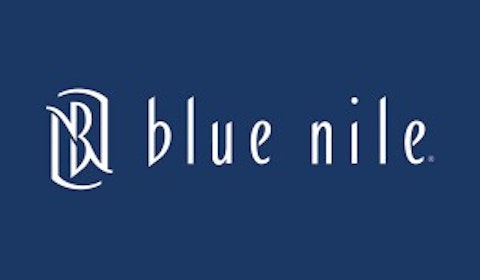Tiffany & Co. (NYSE:TIF) is known for its feature in the 1961 film Breakfast at Tiffany’s , and its 5th Avenue flagship store. Its key New York City store is more of a novelty and tourist attraction these days, but the company’s blue boxes remain recognizable worldwide, and Tiffany itself is one of the market leaders when it comes to fine jewelry .
Tiffany & Co. (NYSE:TIF) has been on a tear over the past five years, up over 100%, compared to the S&P 500’s near 30 % run, but can this blistering growth continue? As the number of “wealthy” households increases thanks to a rebounding economy, and as Asia becomes a viable market for high-end jewelry, Tiffany should continue to reward shareholders nicely.
In the $33 billion fine-jewelry industry, Tiffany owns some 5.5% of the market. While Tiffany tends to cater to the ultra high-end market, the likes of Blue Nile Inc (NASDAQ:NILE) and Signet Jewelers Ltd. (NYSE:SIG) cater to the lower-end markets.
Blue Nile Inc (NASDAQ:NILE) burst onto the scene back in 1999 and has been changing the jewelry retail game every since. The online retailer has been offering consumers a low-cost, convenient, one-stop shop for buying jewelry. Yet, over the last five years, Blue Nile Inc (NASDAQ:NILE) has managed to see earnings decline at an annualized 11 %, while Tiffany has managed to grow EPS at an annualized 16% over the same time period .
Meanwhile, Signet Jewelers Ltd. (NYSE:SIG) is the market leader in the jewelry business, owning about 10% of the market . Signet owns the market for good reason: it caters to the middle market. Chances are, even if you’re not married, you’ve seen one of Signet’s stores; the company operates well-known brands Kay Jewelers and Jared The Galleria Of Jewelry .
Why Tiffany can move higher
Tiffany’s America segment accounts for around half of revenue. But the Asian segment marks the growth story; the segment makes up 20% of revenue. Company wide same-store sales were up an impressive 8% in 1Q 2014, with Asia leading the way; same-store sales for Asia advanced 21%.
While e-commerce is all the rage these days, retail is still a part of Tiffany’s model, with the company planning to open some 16 stores in fiscal 2014. Again, enter Asia, where the majority of the stores will be opened; seven, to be specific. Part of the reason that Tiffany still believes in retail is that buying high-end jewelry, especially engagement rings, continues to be an intimate process, and therefore one that is best done in person.
Tiffany is no stranger to grandiose gestures (you know this if you’ve been in its 5th Ave store), but it is now planning to open a flagship Paris store during fiscal 2014. This 10,000 square-foot store is expected to be a material revenue generator on the back of a rebounding European economy.
Will you marry me?
One-half of the jewelry industry’s sales are diamonds; as a result, it’s no surprise that the marriage rate plays a big role in industry growth. The engagement-ring segment is also still the largest revenue driver for Tiffany.
While the marriage rate has been in decline year-over-year since 2008, marriage rates in mature markets were actually up in 2012. What’s more is that Asia is expected to see some of the best growth in the world over the next couple of years, and, as aforementioned, Asia will be one of Tiffany’s key focuses going forward.
As the economy and credit markets loosen up, so should consumers’ purse strings. I see the top-end jeweler, Tiffany, only growing stronger as the number of high-income earners return to pre-crisis levels. IBISWorld believes that the number of households earning more than $100,000 will grow slightly in 2013, which is a big positive for the likes of Tiffany .
Bottom line
In short, Signet is the cheapest jeweler and Blue Nile Inc (NASDAQ:NILE) the most expensive , with Tiffany in the middle; Signet trades at 13 times forward earnings , Tiffany at 20 times and Blue Nile Inc (NASDAQ:NILE) 35 times . While the valuation appears somewhat unappealing for Tiffany’s, the company still offers a 1.6% dividend yield and is a long-term growth play. Analysts expect the company to grow EPS at an annualized 12% over the next five years .
The future of the jewelry industry will continue to show strong growth, as there’s a good chance consumers will not turn to the likes of Wal-Mart and Target to make key purchases. I’d be a buyer of Tiffany at current levels, given its exposure to the high-market, but Blue Nile Inc (NASDAQ:NILE) is a bit expensive and Signet is focused on the middle market, which is more tied to the economy. I’m holding off on both Blue Nile and Signet.
The article Does the Blue Box Still Have Room to Run? originally appeared on Fool.com and is written by Marshall Hargrave.
Marshall Hargrave has no position in any stocks mentioned. The Motley Fool recommends Blue Nile.
Copyright © 1995 – 2013 The Motley Fool, LLC. All rights reserved. The Motley Fool has a disclosure policy.



